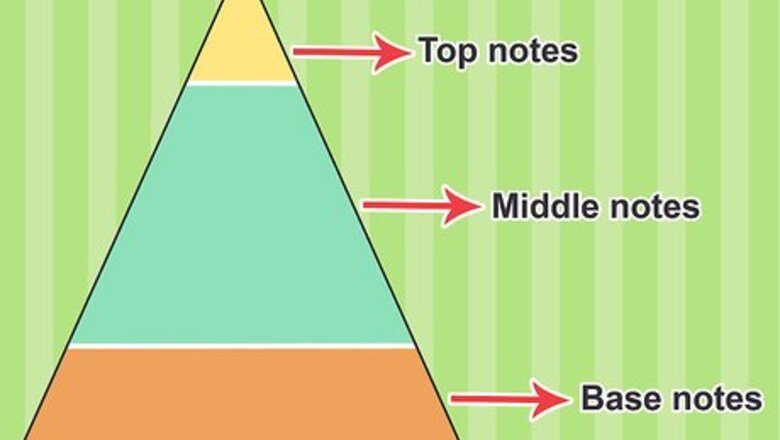
views
Understanding the Science of Perfume
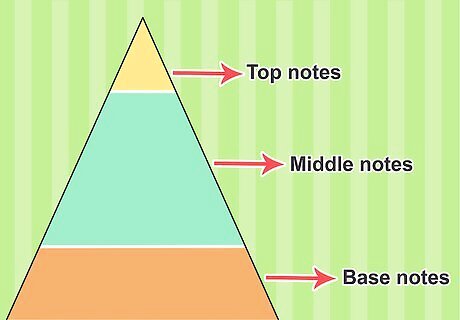
Know the different notes. Perfumes are a blend of different levels of scent, also called “notes”. When you spray a fragrance on your skin, it moves through these notes in the following order: Top notes are what you smell first. They are also what disappears first, usually within 10 to 15 minutes. Middle notes appear as the top notes die off. These are the fragrance’s core, determining which family the perfume belongs to — for example, oriental, woody, fresh, or floral. Base notes accentuate and fix the fragrance’s middle notes, also known as its theme. They comprise the fragrance’s foundation, making the scent last up to 4 or 5 hours on your skin.
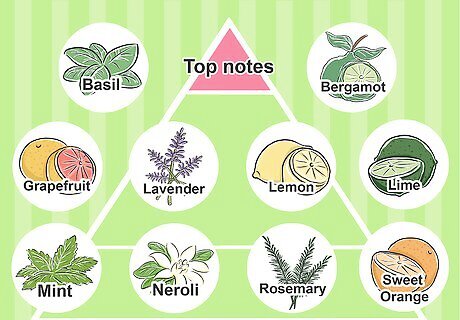
Familiarize yourself with popular top notes. Popular top notes include basil, bergamot, grapefruit, lavender, lemon, lime, mint, neroli, rosemary, and sweet orange.

Familiarize yourself with popular middle notes. These include black pepper, cardamom, chamomile, cinnamon, clove, fir needle, jasmine, juniper, lemongrass, neroli, nutmeg, rose, rosewood, and ylang-ylang.
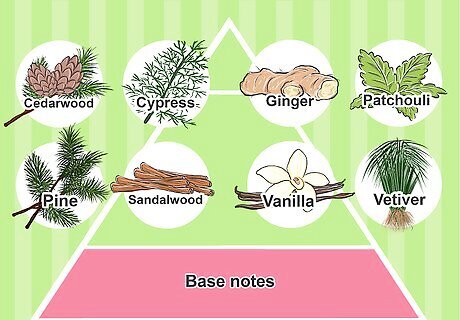
Familiarize yourself with popular base notes. These include cedarwood, cypress, ginger, patchouli, pine, sandalwood, vanilla, and vetiver.
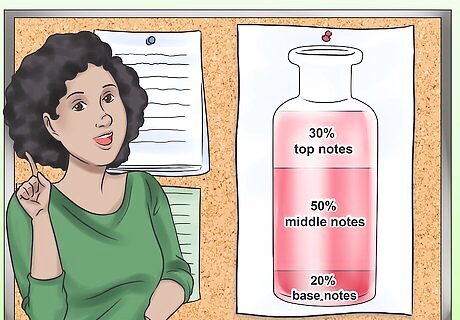
Know the ratios. When mixing a fragrance, first add your base notes, then your middle notes, then finally, your top notes. The ideal ratio for blending notes is 30% top notes, 50% middle notes, and 20% base notes. Some perfumers recommend combining a maximum of 3 to 4 dominant notes.
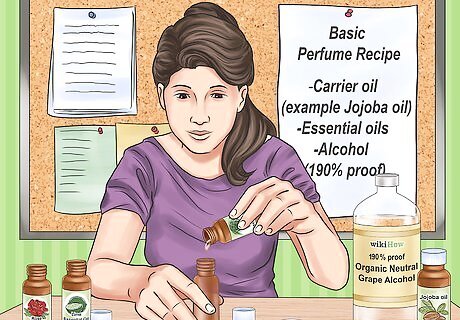
Know the basic recipe. To make a perfume, you need more than just the top, middle, and base notes: you also need something to add them to. Your process begins with a carrier oil. Popular choices include jojoba, sweet almond, and grape seed oil. Next, you’ll slowly add drops of your base, middle, and top notes to the carrier oil. Finally, you’ll add something to help merge the ingredients together. Alcohol is a popular choice because it evaporates quickly and helps diffuse the perfume’s notes. A common choice amongst DIY perfumers is a high-quality, 80- to 100-proof (40% to 50% alc/vol) vodka. If you’re looking to make a solid perfume (more like a lip balm), use melted beeswax for the fixative instead of alcohol or water.

Find out what notes your favorite perfumes contain. If you’re unsure of how to structure a perfume, have a look at the ingredients of your favorite commercial scents. If you have trouble finding the ingredients or separating them into notes, the Basenotes website is a great resource for breaking down the notes in popular perfumes.
Knowing What Materials You Need

Buy dark glass containers. Many people recommend using dark glass containers because the dark glass helps protect your perfume from light, which can shorten its lifespan. You’ll also want to make sure your glass containers haven’t previously contained any food items, as any residual scents will transfer to your perfume. The exception to this would be if you actually wanted to use the scent of what was in the glass container before. (Warning: peanut-butter-banana-chocolate perfume might taste better than it smells!)
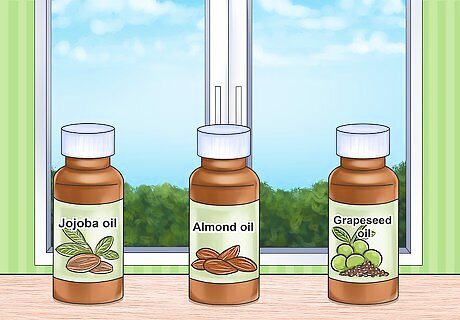
Buy a carrier oil. A carrier oil is what carries the scents in a particular fragrance on to your skin. These are generally unscented, and are used to dilute concentrated oils and aromatics that can otherwise irritate your skin. Your carrier oil can really be anything. You can even use olive oil if you don’t mind the scent. One popular perfumer simmers rose petals in virgin olive oil, then combines it all with vitamin E oil to stabilize it.
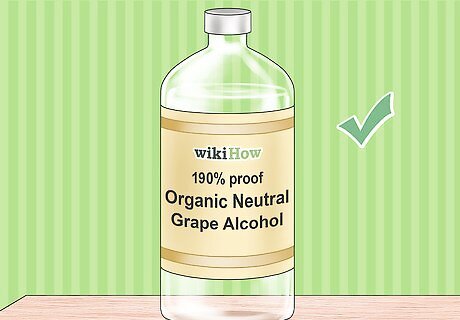
Buy the strongest alcohol you can find. A common choice amongst many DIY perfumers is a high-quality, 80- to 100-proof (40% to 50% alc/vol) vodka. Other DIY perfumers favour 190-proof (80% alc/vol) alcohol. Popular choices for 190-proof alcohol include organic neutral grape alcohol and the much cheaper Everclear, which is a grain spirit.
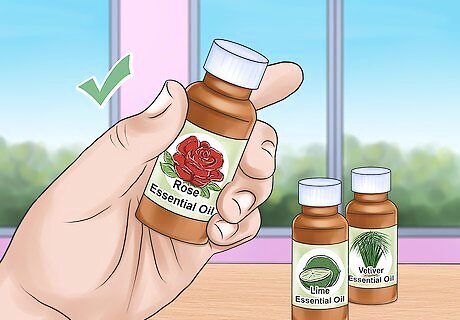
Select your scents. Your perfume can be made out of a wide variety of ingredients. Common aromatics for perfumes include essential oils, flower petals, leaves, and herbs. EXPERT TIP Amber Crain Amber Crain wikiHow Staff Writer Amber Crain has been a member of wikiHow’s writing staff for the last six years. She graduated from the University of Houston where she majored in Classical Studies and minored in Painting. Before coming to wikiHow, she worked in a variety of industries including marketing, education, and music journalism. She's been a radio DJ for 10+ years and currently DJs a biweekly music program on the award-winning internet radio station DKFM. Her work at wikiHow supports her lifelong passion for learning and her belief that knowledge belongs to anyone who desires to seek it. Amber Crain Amber Crain wikiHow Staff Writer "If you aren't sure how to get started, consider investing in a basic perfume making kit like the ones offered by Vetiver Aromatics. These kits have everything a beginner needs to dive right into the craft—several essential oil options, a carrier, blotters, glass vials, droppers, etc. Another great resource that offers kits (and much more) is The Perfumer's Apprentice website."
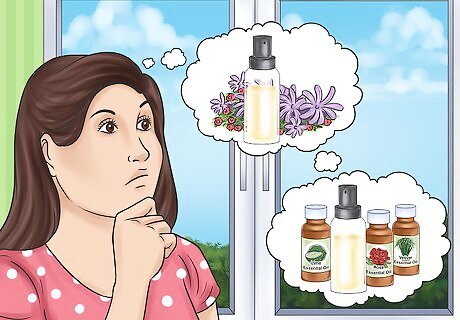
Decide on a method. The method for making perfume will vary slightly depending on your materials. Two common aromatics used for perfume are plant materials (flowers, leaves, and herbs) and essential oils; the methods vary for each of these.
Using Fresh Flowers, Leaves or Herbs
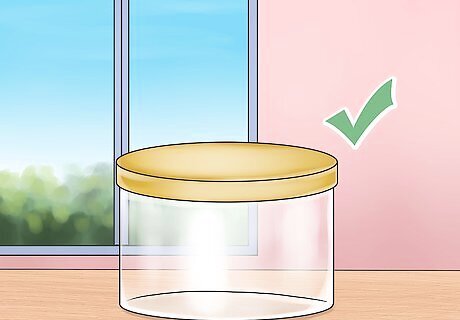
Obtain a clean glass container. The type of container isn’t as important as the material: just make sure that a) it’s clean and b) it’s glass. The container also needs to have a tight-fitting lid.But having dark containers also helps for preserving. Perfumers generally recommend using dark glass, which can lengthen the fragrance’s life by protecting it from light. Avoid using jars that have previously contained food items, even if they’ve been washed out, as the glass might pass the scent on.

Obtain an odorless oil. Popular choices for use in perfumes include jojoba oil, almond oil, and grape seed oil.
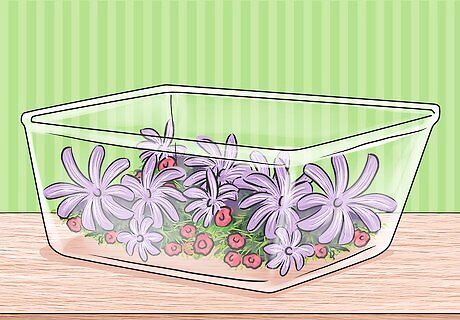
Collect flowers, leaves, or herbs whose scent appeals to you. Be sure to collect plant materials when the scent is strong and the leaves are dry. Letting them air out can leave them limp and with a less effective scent. You may want to collect and dry more plants than you need, just in case you want to add more to strengthen the oil’s scent later on.
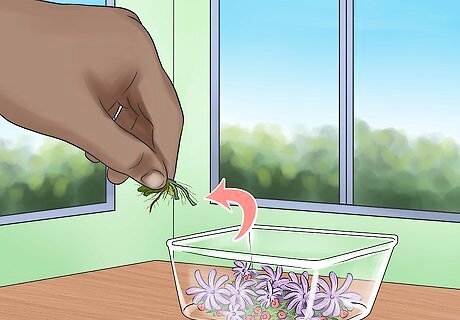
Remove any unwanted plant materials. If you’re using flowers, use only the petals. If you’re using leaves or herbs, remove any twigs or other bits that might interfere with the scent.
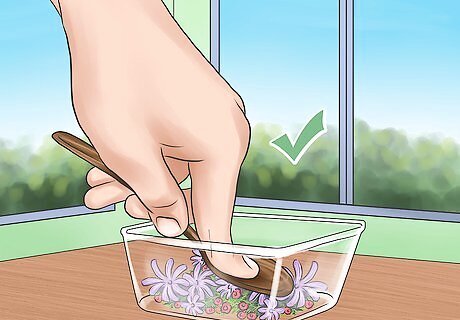
Bruise the plant materials lightly. This step is optional, but may help to bring out the scent more. You’ll just want to lightly press on the plant materials with a wooden spoon.
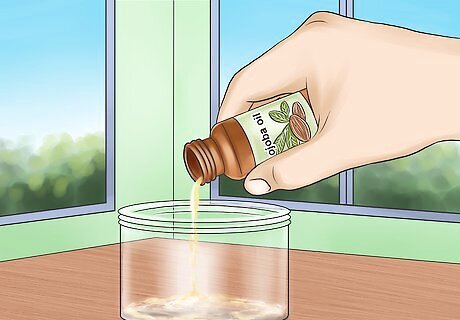
Pour some oil into the glass container. It need only be a small amount — just enough to properly coat and cover your petals/leaves/herbs.
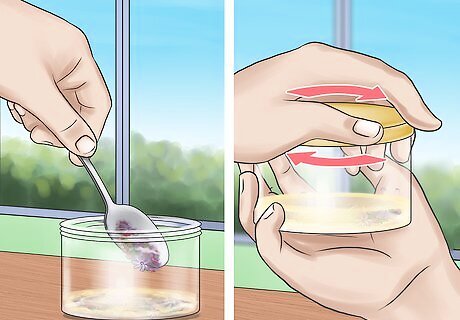
Add the plant materials to the oil and shut the lid. Ensure that the lid is closed tightly.
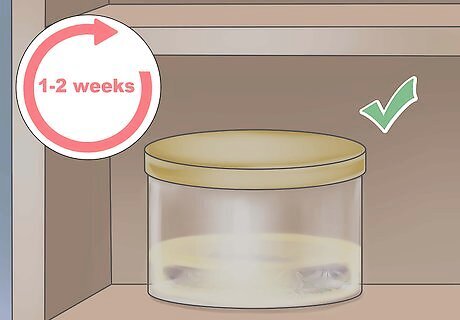
Let the jar sit in a cool, dark place for one to two weeks.
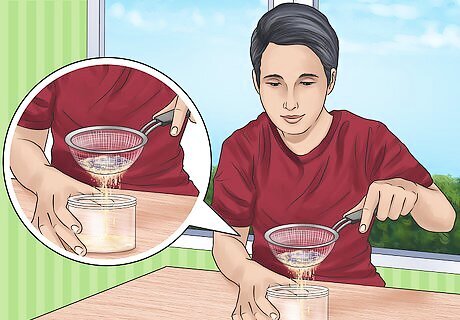
Open, strain and repeat. If the oil doesn’t smell as strong as you’d like it to after one to two weeks, you can strain out the old plant materials and add new ones to the scented oil, then store it once more. You can repeat this process for several weeks or even months until the oil has reached the desired strength. Be sure to keep the oil! It’s the old plant materials that you want to discard.
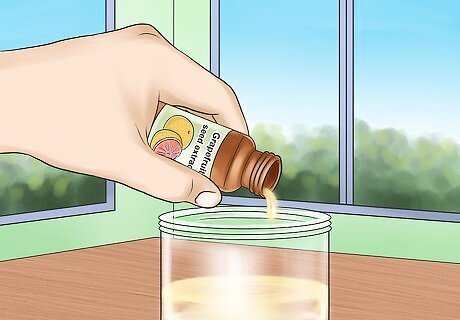
Preserve your scented oil. Once you’re happy with the oil, you can add 1 or 2 drops of a natural preservative such as vitamin E or grapefruit seed extract to your scented oil to help extend its life. If you’d like to turn the oil into a balm, you can also add some beeswax to it: melt some beeswax in the microwave, combine it with the perfume, then dump the whole mixture into a container to cool and solidify.
Using Essential Oils
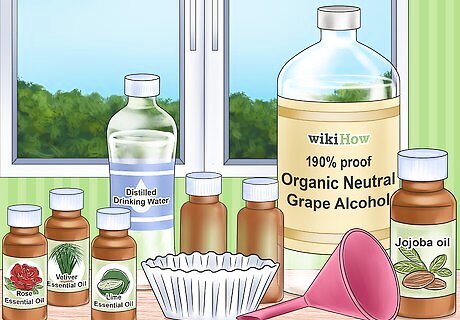
Gather your materials. You’ll need the following ingredients: 2 tbsp carrier oil (jojoba, almond, or grape seed will do) 6 tbsp 100- to 190-proof alcohol 2.5 tbsp bottled (not tap) water 30 drops of essential oils (at least 1 of each: base, middle, and top) Coffee filter Funnel 2 clean glass containers
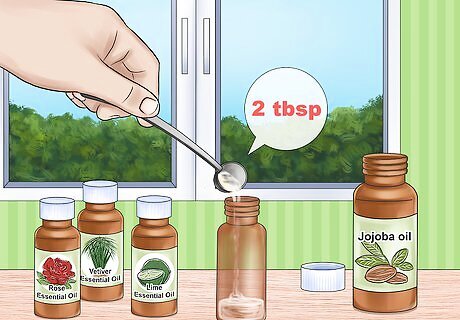
Pour 2 tbsp carrier oil into the glass bottle.
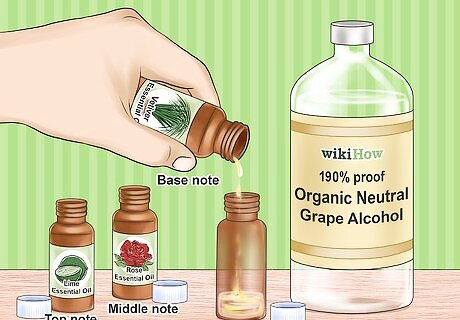
Add your essential oils. You’ll want to add roughly 30 drops in total. Start with your base notes, then add your middle notes, then add your top notes. The ideal ratio is 20% base, 50% middle, and 30% top. Pay attention to the scents that you are adding: if one scent is much stronger than the rest, you’ll want to add less of it so that it doesn’t overpower everything else.
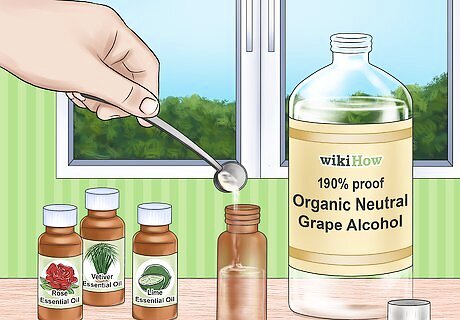
Add the alcohol. Use a high-quality alcohol with a high alcohol content. Vodka is a popular choice amongst DIY perfumers.
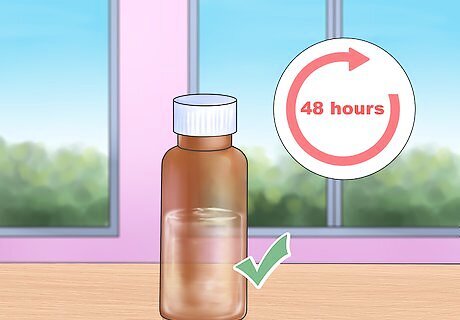
Allow the perfume to sit for at least 48 hours. Shut the lid and allow the perfume to cure for at least 48 hours. You can leave it for up to 6 weeks, which is when its scent will be at its strongest. Check the bottle regularly to see where the scent is at.

Add 2 tbsp bottled water. Once you’re happy with the scent, add 2 tbsp bottled water to your perfume.
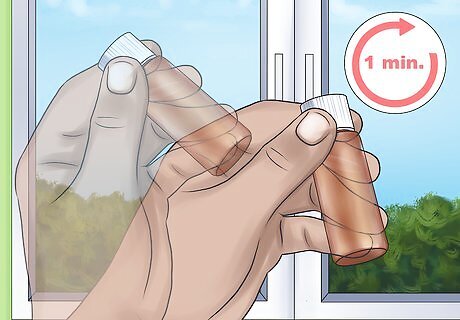
Shake the bottle vigorously. Do this for 1 minute to ensure that the contents are well blended.
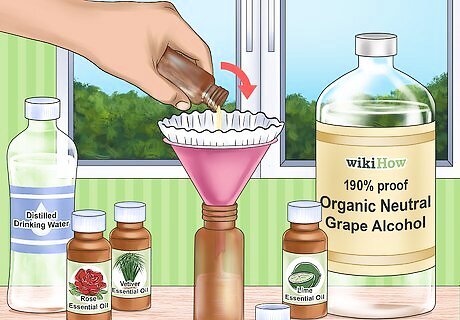
Transfer the perfume to another bottle. Using a coffee filter and a funnel, pour your perfume into a clean, dark glass bottle. You can also transfer it to a fancy bottle if you’re giving it as a gift. You may want to label the bottle with the ingredients and a date on it so that you can keep track of how long it lasts. That way, you’ll know whether you should make more or less the next time around.
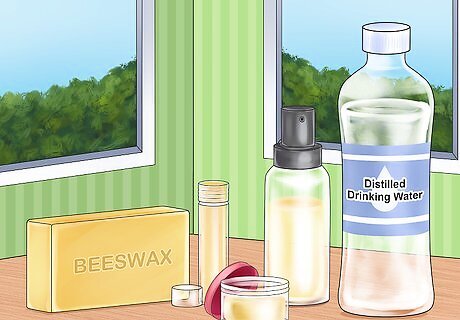
Try a variation. To make a solid perfume (like a lip balm) instead of a spray/liquid perfume, try substituting the water with melted beeswax. You would add the melted beeswax to your perfume and then pour the warm mixture into a container to solidify. You can buy beeswax at most health food stores.














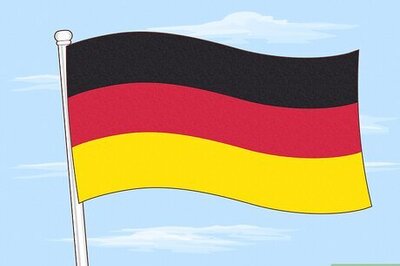




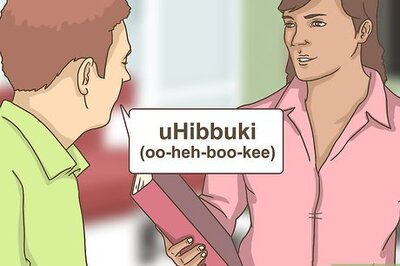
Comments
0 comment